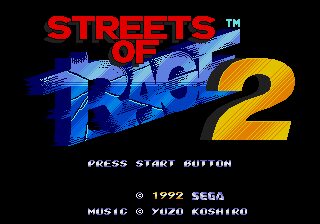Bruce Lee is a platform beat-em-up developed for Atari 8-bit and published in 1984 by Datasoft. The game created by Ron Fortier (with graphics by Kelly Day) became one of the most memorable and innovative action games of the mid-80s. Its popularity arrived when it was converted for Commodore 64, and given the success, versions for Amstrad CPC, ZX Spectrum, PC Booter, Apple II, and many others also followed.
In the game, you play as the legendary martial arts master as he makes his way through a mysterious fortress full of deadly traps and relentless enemies. Unlike Karateka or Kung-Fu: The Way of the Exploding Fist, Bruce Lee is a platform game. You must explore different screens and solve puzzles. Even its approach to enemy AI and level design is quite unique. Instead of presenting enemies in predetermined positions, like most platformers of the era, Bruce Lee introduces two adversaries - the Green Yamo and the Black Ninja - who appear randomly throughout the fortress and actively hunt you down.
This dynamic enemy system creates an unpredictable and tension-filled experience. Bruce and his adversaries possess the same fighting abilities: they can throw punches and flying kicks, withstand multiple hits before dying, and kill opponents by making them fall. The player's only tactical advantage is the ability to lie prone, becoming immobile but temporarily invulnerable to attacks—a risk-reward mechanic that makes fights more interesting.
The fortress itself is an adversary. Each room presents various types of dangers, from electrified barriers to laser beams, crushing spikes that slam you to the ground, to deadly pits. These hazards require precise timing to overcome, somewhat like in Pitfall!, but here the constant threat of enemy interference sometimes becomes nerve-wracking. A perfect jump can be interrupted by an unexpected kick, sending Bruce into deadly traps.
Visually, Kelly Day's pixel art effectively captures the essence of the martial arts atmosphere. Maybe it's also the nostalgia effect, but Bruce Lee's graphics, however simple, are very expressive. Obviously, we're not at the level of the best C64 graphics; we're more at a ZX Spectrum level. However, Bruce's sprite animation is fluid and expressive, particularly his iconic flying kick pose. The fortress environments are detailed, with each room seeming to present its own combination of platforms, dangers, and secret passages. The color palette effectively conveys the mysterious and dangerous mood of the setting. The only difference between the Atari 8-bit version and the Commodore 64 one is precisely in the color palette. In the C64 version you miss the red, which becomes a faded dark pink, while Bruce Lee who is pink in the Atari 8-bit version becomes acid green. Otherwise the game is practically identical.
The difficulty progression is masterfully calibrated, starting with manageable challenges before scaling up to decidedly demanding combinations of platforming and combat. Unlike many games that simply increase enemy health or speed, Bruce Lee's difficulty is purely at the level design level, demonstrating Ron Fortier's excellent work.
The only somewhat lacking thing is the audio setup. The game has only a very simple little tune and sound effects reduced to a minimum. We're light-years away from Rob Hubbard's soundtrack for International Karate +. But what matters here is the fun, not the music.
Bruce Lee's influence has extended far beyond its original release, inspiring countless action-platformers with its blend of martial arts combat and exploration. Games like Renegade and subsequent beat-em-ups owe a debt to Fortier's innovative design philosophy.
Despite its age, Bruce Lee remains enjoyable and fun, offering a unique gaming experience that few titles have managed to successfully replicate. If you want to try a game that made history, don't miss it.













